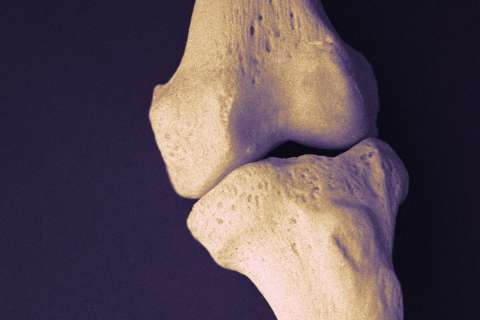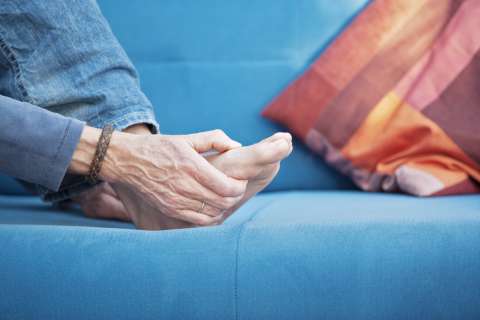Dear Doctors: I have been diagnosed with inverse psoriasis in the area of my groin. My dermatologist has prescribed clobetasol propionate ointment to be used twice a day. The skin in that area bleeds easily, and physical contact is painful. Please explain this condition and if there is a cure.
Dear Reader: Inverse psoriasis is a variant of psoriasis, a chronic inflammatory skin condition. Symptoms include a raised and itchy rash and scaling, flaking and thickening of the skin. For those with a lighter skin tone, areas of psoriasis typically appear reddish pink. In people with a darker complexion, affected areas appear brown or a purplish brown. Psoriasis can also affect the nails, and it can cause pain in the joints.
Although the causes of the disease are not fully understood, it is linked to a malfunction in the immune system. Genetic inheritance plays a role, as well. Up to 40% of people living with psoriasis have a close relative with the disease.
Psoriasis is categorized into several different types, each of which presents in different areas of the body, and with slightly different symptoms. Among these is inverse psoriasis, also referred to as flexural psoriasis, which is your diagnosis.
Inverse psoriasis arises in areas where the skin folds and creases, such as the groin, genitals, thighs, armpits and beneath the breasts. When the opposing surfaces rub together, friction leads to inflammation. And because perspiration lingers in these enclosed areas, ongoing moisture leaves skin susceptible to damage, such as cracking and splitting. There is also an increased risk of infection.
The use of clobetasol propionate in topical applications, such as the ointment that your doctor has prescribed, is a common approach to managing skin inflammation. It's a powerful corticosteroid that works by blunting the body's inappropriate immune response. The drug is often used in managing the symptoms of psoriasis, as well as in cases of eczema and various types of dermatitis.
While clobetasol propionate is useful for easing itch and inflammation, potential side effects of the medication make it suitable only for short-term and restricted use. These can include skin reactions such as burning, flushing and oozing. It can also cause the skin to become thin, fragile and even more prone to damage. And because it is a steroid and is absorbed into the body through the skin, it can interact with other medications.
Unfortunately, there is no cure for psoriasis at this time. However, additional treatment options are available. These include a new class of oral medications that mediate immune response and can be helpful in certain cases. Phototherapy, which uses various wavelengths of light to disrupt localized immune response, may also be an option. This requires several treatments per week to become effective, and it often needs to be repeated. Talk to your doctor about the problems you're having, and ask if any of these treatments might be an option for you. Also review with your doctor the guidelines for the ointment you are using.
Meanwhile, behavioral changes, including using fragrance-free soap, wearing loose-fitting garments and keeping the area clean and dry are important.
(Send your questions to [email protected], or write: Ask the Doctors, c/o UCLA Health Sciences Media Relations, 10960 Wilshire Blvd., Suite 1955, Los Angeles, CA, 90024. Owing to the volume of mail, personal replies cannot be provided.)





